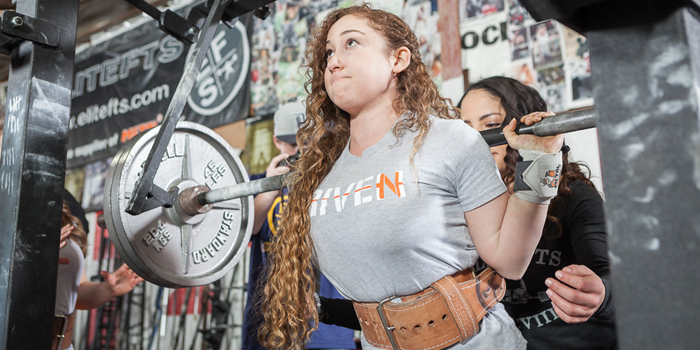
This past weekend in Ohio was the infamous Arnold weekend, meaning the lovely city of Columbus was filled with tons of powerlifters, bodybuilders, sports athletes, and bros who like free samples.
Similar to past years, I passed on being crammed shoulder to shoulder in the convention center and chose to catch up with my friends outside of the chaos that is The Arnold. And it was at one of those very catch-ups that I was inspired to write this article.
RECENT: The Good and The Bad About Insulin
On Sunday afternoon, just as the whole weekend was coming to an end, we grabbed some breakfast with Swede and his lovely fiancée Sydney at Bob Evans. After about two hours of talking, we somehow ended up down a rabbit hole on the topic of supernormal stimuli.
Supernormal stimuli is basically a term evolutionary biologists use for a stimulus that has evolved or been engineered to elicit a reaction that is stronger than normal. It's the biological rationale behind our (people in general) attraction to engineered sugary food, surgically enhanced body parts, and deliberate social media highlight reels.
While we were talking about supernormal stimuli in a context I won’t discuss here (cough-cough reproductive parts), after we left breakfast, I started to think about bodybuilding and how supernormal stimuli has crept its way into the evolution of the sport.
Getting a Grip on Supernormal Stimuli
A supernormal stimulus is a stimulus that has exaggerated features of something we are hardwired to respond to biologically. We feel a mysterious, irresistible draw to such a stimulus.
Natural selection, an ingrained part of our biology, is a process that shapes what we look like and how we act on an evolutionary scale. In the early 1900s, the biologist Nikolaas Tinbergen was studying animals and what triggered their behaviors when he realized that their instinctual actions were heavily influenced by specific visual stimuli. Even cooler, he realized that more was better when it came to a stimulus, meaning that an instinctual response was proportional to the magnitude of the stimulus. This finding wasn't just good — it was Nobel Prize-worthy1.
Tinbergen found that songbirds were instinctually driven to protect the largest and most colorful eggs. Hence, when given an option of protecting their own small, pale eggs or massive, colorful fake ones (supernormal stimuli), they would pick the artificial eggs2. He also found that male butterflies would try to preferentially mate with dummy butterflies over viable mates if they had more defined markings.
Over time, he repeated these experiments on various types of animals, consistently finding that a supernormal stimulus was always capable of hijacking the animal’s evolutionary brain and subsequent actions.
Although we are way more advanced than a songbird, our brains and preferences are still heavily influenced by our hardwired primal instincts. Just like the songbird, we, too, are often victim to selecting supernormal stimuli over a realistic one. Sure, we have a conscience that can override and silence our primal instincts, but the reality is we rarely choose to do that.
Don’t believe me? Just look around. We embrace the “more mentality.” Is it common to hear a man say, “Her breasts are/booty is too big”? Or to hear a woman say, “He’s too tall or too wealthy”? It’s nothing to be ashamed of, as it’s just biology. But how does that relate to aesthetic sports?
Supernormal Stimuli and the Evolution of Bodybuilding
The Mr. Olympia statue is a replica of the first famous bodybuilder, Eugen Sandow (5-foot-8, 180 pounds). Sandow started off as a strongman, and in 1891, he put on the first bodybuilding contest. Men that competed during this time were bigger than the average man, but they were nothing special by today’s standards.
Then big was redefined. Enter guys like John Grimek (5-foot-8.5, 195 pounds) and Steve Reeves (6-foot-1, 216 pounds). In the 1940s, John (a bodybuilder/weightlifter) and Steve (a movie star/bodybuilder) were considered the top of the sport and represented the time of the V-shaped bodybuilders. Sure, they were big, especially considering it was the pre-steroid area, but they wouldn't even be able to hang in an NPC bodybuilding and classic competition today. Honestly, they probably wouldn't have been able to hang in the fitness division.
Nearly 20 years later, the “more mentality” still prevailed, and the steroid area began. Larry Scott, the winner of the first two Mr. Olympia titles, was the first face of this era. He was 5-foot-7, weighed 208 pounds, and sported 20-inch biceps. And sure, that was nothing compared to the 24-inch biceps later seen on the likes of Ronnie Coleman; however, at this time, he really showed how anabolics and iron could elevate the human physique.
Sergio Oliva (5-foot-10, 240 pounds), Bill Pearl (5-foot-10, 242 pounds), Lou Ferrigno (6-foot-5, 285 pounds), Frank Zane (5-foot-9, 200 pounds), and Arnold Schwarzenegger (6-foot-2, 235 pounds) followed in Scott and Coleman’s footsteps, giving bodybuilding a look of massive upper bodies, tiny waists, and rounded quad sweeps.
These men really redefined the bodybuilding scene. However, this isn’t an article about how big they were; it's about supernormal stimuli. And hence, these men were not supernormal in size in comparison to today’s IFBB professionals.
In the ’90s, freakish physiques started to emerge, thanks to the bigger-is-better thought process. Soon, the size of competitors and the amounts and types of drugs used reached new territory. Dorian Yates led the mass monster front (5-foot-10, 250 pounds).
Soon, bodybuilding was dominated by the massive grainy look. While Yates seemed superhuman at the time, over the course of 10 years, he was surpassed by men almost 50 pounds heavier, like Markus Rühl (5-foot-10, 287 pounds), Ronnie Coleman (5-foot-11, nearly 300 pounds), Jay Cutler (5-foot-10, 260-290 pounds), Toney Freeman (6-foot-2, 285 pounds), and Phil Heath (5-foot-9, 240-275 pounds).
If you’re not convinced that massive muscle is a supernormal stimulus in the world of bodybuilding by now, then frankly, I’m stumped. And considering that supernormal stimuli have no sweet spots or limitations, sometimes I wonder what’s to come in terms of the evolution in future years. While I have no idea what that might be, I am pretty sure it will be anything but normal.
Why Care?
I think it's important to note that if you choose to compete in any of these sports, especially bodybuilding, you are going to have to acknowledge the evolution of the division. Animals mainly encounter supernormal stimuli when human experimenters build them, but in a division like bodybuilding, each individual is the experimenter and builder of the supernormal stimulus. It’s important to consider that if you have any interest in competing at the highest level in the sport.
In bodybuilding, the trend is “bigger is better,” and it would be naïve to think you could make it to the top without modifying, building, and engineering your body to a supernormal level. For those in the comments section that might find that shitty, remember: your reptile brain thinks it’s super.
References
- Raju, T.N. The Nobel chronicles. 1973: Karl von Frisch (1886-1982); Konrad Lorenz (1903-89); and Nikolaas Tinbergen (1907-88). Lancet 354, 1130 (1999).
- Dewsbury, D.A. The 1973 Nobel Prize for Physiology or Medicine: recognition for behavioral science? The American psychologist 58, 747-752 (2003).











1 Comment